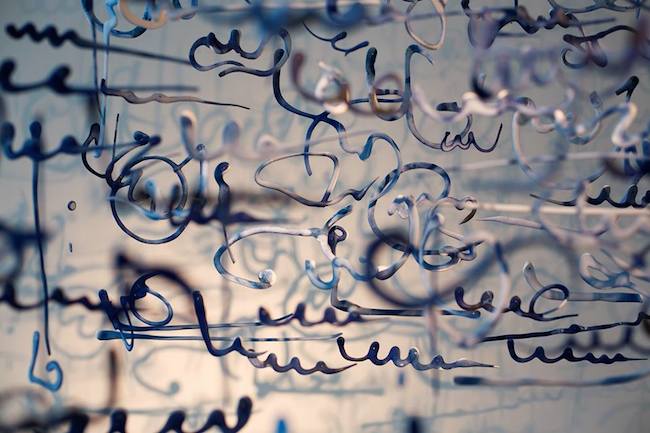In 2008 Polish artist and designer Marek Cecula exhibited Fragmentation at the BWA Wroclaw, Poland. Cecula used shards of industrial porcelain to create a visual representation of how monotheistic religions take on different forms. Cecula worked with Buddhism, Christianity, Judaism and Islam, showing how infinitely varied those religions can be.

The latter three religions share a common source, but each sprouted into their own religious movement. And within each religion there are many facets, many doctrinal arguments that cause people to argue, to go to war, or to split off and form their own places of worship. Sometimes this diversity was embraced. In fact, certain gnostic Christian sects considered it a sign of religious mastery for a member to write their own interpretation of an existing Bible story.

Buddhism seems to be an outlier, given that it’s not an Abrahamic religion, but within Buddhism there are also variations, divisions. I’m reminded of a massive debate I once witnessed on Twitter between Buddhists who were arguing over the concept of tulkas. Their terminology was different, but the split itself and the resulting debate was reminiscent of arguments I’ve seen within Christianity.
Many people think of all religion as a form of orthodoxy, rigidly defined and jealously guarded belief structures that are slow to change. Monotheism is often compared to other belief systems that are more fluid with how mythological elements are adapted and perceived by the faithful. Cecula’s work (which seems like a parable in a strange fashion) shows that monotheism is not as ironbound as we assume. Yes, it plays out with masses of people, but there is still an individual drive to adapt a belief to one’s own spiritual experience (for better or worse).


Cecula’s work captures the many rising from one. He was careful to differentiate the content of belief from its structure. This draws us back a few paces and allows us to view monotheism like a slide under a microscope. From the artist:
“Shards of porcelain plates (the material which constructs the majority of the work) coming from initially perfect and complete objects, rejected and damped by the industry quality selection becomes row material for this project.
“It becomes a symbolic and creative substance of recycling , which form new vision, meanings and matter of the faith.
“The project does not come, as a religious message and dose not try to create or replace any liturgical forms or objects. However trough the synthesis and interpretation of the elements exhausted in their meanings it introduce new image/representations of the known symbols, practices and manifestations present in the four main world religions.”
The images shown here are from Cecula’s interpretation of Islam in the abstract form. The twisting porcelain letters hang in the gallery and are lit so that they cast a shadow on the wall. Here, we have the letters themselves, the highlighting of certain letters by the lights and the shadows the letters cast on the wall.
Bill Rodgers is a Contributing Editor at CFile.
Any thoughts about this post? Share yours in the comment box below.



Installation views from Marek Cecula, Fragmentation, 2008 at the BWA Wroclaw, Poland


Add your valued opinion to this post.